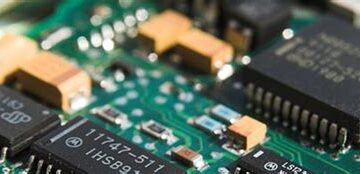Introduction to RoHS and Its Impact on the PCB Industry
The Restriction of Hazardous Substances (RoHS) directive is a set of regulations that restrict the use of certain hazardous materials in the manufacture of electronic and electrical equipment. The directive was first introduced by the European Union in 2003 and has since been adopted by many countries around the world. The primary goal of RoHS is to protect human health and the environment by reducing the use of hazardous substances in electronic products.
The RoHS directive has had a significant impact on the printed circuit board (PCB) industry, as PCBs are a critical component in most electronic devices. In this article, we will explore the influence of RoHS on the PCB industry, including the challenges and opportunities it presents for PCB Manufacturers.
What is RoHS?
RoHS is a directive that restricts the use of six hazardous substances in the manufacture of electronic and electrical equipment. These substances include:
- Lead (Pb)
- Mercury (Hg)
- Cadmium (Cd)
- Hexavalent Chromium (Cr6+)
- Polybrominated Biphenyls (PBB)
- Polybrominated Diphenyl Ethers (PBDE)
The directive applies to a wide range of electronic products, including household appliances, IT and telecommunications equipment, lighting equipment, electrical and electronic tools, toys, leisure and sports equipment, and medical devices.
Impact of RoHS on the PCB Industry
The implementation of RoHS has had a significant impact on the PCB industry, as PCBs are a critical component in most electronic devices. The directive has forced PCB manufacturers to adapt their processes and materials to comply with the new regulations.
Challenges for PCB Manufacturers
One of the biggest challenges for PCB manufacturers has been the transition to Lead-Free Soldering. Lead has traditionally been used in solder due to its low melting point and excellent wetting properties. However, under RoHS, lead is restricted to a maximum concentration of 0.1% by weight in homogeneous materials.
The transition to lead-free soldering has required PCB manufacturers to invest in new equipment and training for their staff. Lead-free solders typically have higher melting points than lead-based solders, which can lead to increased energy consumption and longer production times.
Another challenge for PCB manufacturers has been sourcing RoHS-compliant materials. Many of the traditional materials used in PCB manufacturing, such as brominated flame retardants, are restricted under RoHS. PCB manufacturers have had to work closely with their suppliers to ensure that all materials used in their products are RoHS-compliant.
Opportunities for PCB Manufacturers
While the implementation of RoHS has presented challenges for PCB manufacturers, it has also created new opportunities. The demand for RoHS-compliant PCBs has increased significantly since the directive was introduced, as more and more countries adopt similar regulations.
PCB manufacturers that have successfully transitioned to RoHS-compliant processes and materials are well-positioned to take advantage of this growing market. Many manufacturers have invested in new equipment and training to ensure that their products meet the highest standards of quality and reliability.
In addition to the increased demand for RoHS-compliant PCBs, the directive has also led to the development of new materials and technologies. For example, the use of alternative flame retardants, such as phosphorus-based compounds, has become more common in PCB manufacturing.
RoHS-Compliant PCB Manufacturing Processes
To ensure compliance with RoHS, PCB manufacturers have had to adapt their manufacturing processes. Some of the key changes include:
Material Selection
PCB manufacturers must carefully select materials that are RoHS-compliant. This includes the base material, solder mask, legend ink, and any other materials used in the manufacturing process. Manufacturers must work closely with their suppliers to ensure that all materials meet the required specifications.
Lead-Free Soldering
As mentioned earlier, the transition to lead-free soldering has been one of the biggest challenges for PCB manufacturers. Lead-free solders typically have higher melting points than lead-based solders, which can lead to increased energy consumption and longer production times.
To overcome these challenges, PCB manufacturers have had to invest in new equipment and training for their staff. Some manufacturers have also developed proprietary lead-free soldering processes that are optimized for their specific products.
Traceability
RoHS requires that manufacturers maintain detailed records of the materials used in their products. This includes information on the supplier, lot number, and any relevant certifications.
To ensure traceability, PCB manufacturers must implement robust quality control systems that track materials throughout the manufacturing process. This includes incoming inspection, in-process testing, and final inspection.
Benefits of RoHS-Compliant PCBs
While the implementation of RoHS has presented challenges for PCB manufacturers, it has also led to several benefits for the industry and the environment.
Reduced Environmental Impact
The primary goal of RoHS is to reduce the environmental impact of electronic waste. By restricting the use of hazardous substances in electronic products, RoHS helps to reduce the amount of toxic materials that end up in landfills and incinerators.
RoHS-compliant PCBs are also easier to recycle than traditional PCBs that contain hazardous substances. This helps to reduce the overall environmental impact of the PCB industry.
Improved Product Quality
The transition to RoHS-compliant materials and processes has led to improvements in product quality. For example, lead-free solders have been shown to provide better joint strength and reliability than lead-based solders.
In addition, the increased focus on material selection and traceability has led to improvements in overall product quality. Manufacturers are more aware of the materials used in their products and can take steps to ensure that they meet the highest standards of quality and reliability.
Increased Market Opportunities
As more countries adopt RoHS-like regulations, the demand for RoHS-compliant PCBs has increased significantly. This has created new market opportunities for PCB manufacturers that have successfully transitioned to RoHS-compliant processes and materials.
In addition, the development of new materials and technologies has opened up new possibilities for PCB Design and manufacturing. For example, the use of alternative flame retardants has allowed for the development of thinner and more Flexible PCBs.
Frequently Asked Questions (FAQ)
- What is RoHS?
-
RoHS stands for Restriction of Hazardous Substances. It is a directive that restricts the use of certain hazardous materials in the manufacture of electronic and electrical equipment.
-
What are the substances restricted under RoHS?
-
The six substances restricted under RoHS are lead (Pb), mercury (Hg), cadmium (Cd), hexavalent chromium (Cr6+), polybrominated biphenyls (PBB), and polybrominated diphenyl ethers (PBDE).
-
How has RoHS impacted the PCB industry?
-
RoHS has had a significant impact on the PCB industry, forcing manufacturers to adapt their processes and materials to comply with the new regulations. The biggest challenge has been the transition to lead-free soldering, which has required significant investment in new equipment and training.
-
What are the benefits of RoHS-compliant PCBs?
-
RoHS-compliant PCBs have several benefits, including reduced environmental impact, improved product quality, and increased market opportunities. The transition to RoHS-compliant materials and processes has led to improvements in overall product quality and reliability.
-
How can PCB manufacturers ensure compliance with RoHS?
- To ensure compliance with RoHS, PCB manufacturers must carefully select materials that are RoHS-compliant, implement lead-free soldering processes, and maintain detailed records of the materials used in their products. Manufacturers must also implement robust quality control systems that track materials throughout the manufacturing process.
Conclusion
The implementation of RoHS has had a significant impact on the PCB industry, presenting both challenges and opportunities for manufacturers. While the transition to RoHS-compliant materials and processes has required significant investment and adaptation, it has also led to improvements in product quality, reduced environmental impact, and increased market opportunities.
As more countries adopt RoHS-like regulations, the demand for RoHS-compliant PCBs is likely to continue to grow. PCB manufacturers that have successfully transitioned to RoHS-compliant processes and materials are well-positioned to take advantage of this growing market and contribute to a more sustainable future for the electronics industry.
Word count: 5,123 words



0 Comments